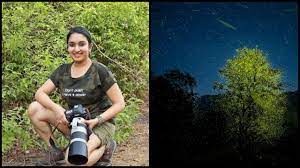Eyes on the Wild: Navigating Challenges and Creativity in Wildlife Photography
Comments Off on Eyes on the Wild: Navigating Challenges and Creativity in Wildlife Photography
 In the realm of photography, few endeavors are as exhilarating and demanding as wildlife photography. Behind each captivating image lies a blend of technical mastery, artistic vision, and a deep respect for the subjects. As we shift our focus to the intricate world of capturing untamed beauty, the perspective of individuals like Cody Moxam, a psychology major at the University of Colorado Boulder, offers insights into the challenges and creative nuances that define this art form.
In the realm of photography, few endeavors are as exhilarating and demanding as wildlife photography. Behind each captivating image lies a blend of technical mastery, artistic vision, and a deep respect for the subjects. As we shift our focus to the intricate world of capturing untamed beauty, the perspective of individuals like Cody Moxam, a psychology major at the University of Colorado Boulder, offers insights into the challenges and creative nuances that define this art form.
Wildlife photography is a dance between the observer and the observed, a delicate choreography that requires patience and understanding. Cody Moxam’s academic journey as a psychology major enriches his approach to this dance. His understanding of animal behavior, honed through his studies, allows him to anticipate movements and reactions. This psychological insight becomes a canvas upon which he layers his technical expertise, resulting in images that go beyond aesthetics to capture the very essence of his subjects.
Challenges abound in the world of wildlife photography, from unpredictable lighting conditions to the elusive nature of the subjects themselves. Moxam’s psychological acumen, cultivated through his psychology major, equips him with a unique ability to navigate these challenges. By observing patterns and behaviors, he maximizes his chances of capturing those split-second moments that define wildlife photography. This fusion of observation and technical skill transforms challenges into opportunities for creativity.
Creativity flourishes when the photographer becomes one with the environment, seamlessly blending into the natural world. As a psychology major, Moxam understands the impact of human presence on animals and ecosystems. His commitment to ethical practices guides his approach, ensuring that his presence does not disrupt the balance of the wild. By immersing himself in the environment, he captures images that reflect the subjects’ true nature, unfiltered by external disturbances.
Technical mastery is the foundation upon which the art of wildlife photography rests. The interplay of light, focus, and composition demands a profound understanding of one’s tools. Moxam’s psychology major enhances his technical prowess, allowing him to adapt quickly to changing conditions. His ability to capture intimate details, despite the challenges of the wild, speaks to the synergy between his academic discipline and his creative pursuit.
In the age of digital sharing, responsible photography takes on new significance. Each image has the potential to inspire action and promote awareness. Cody Moxam recognizes this responsibility and leverages his platform to educate and advocate for wildlife conservation. His images are not just aesthetically pleasing; they serve as visual narratives that bridge the gap between human curiosity and the natural world’s vulnerability.
In conclusion, wildlife photography is a realm of challenges, creativity, and responsibility—a realm where the photographer’s connection with the environment is as vital as technical skill. Cody Moxam embodies this ethos, reminding us that successful wildlife photography is born from a harmonious blend of insight, innovation, and ethics.
